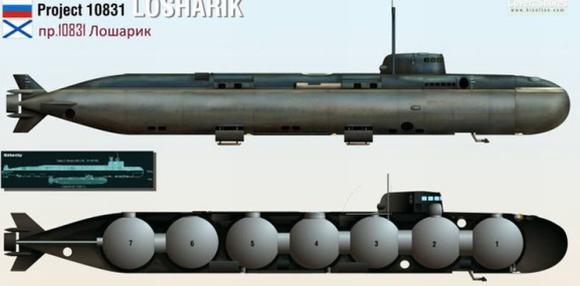 On July 2, Russia’s Defense Ministry announced that a fire had broken out on a research submarine killing 14 sailors while the ship was operating in Russia’s territorial waters in the Barents Sea. Russian authorities declined to further identify the submarine, but various Russian sources have identified the sub as the AS-12 (also known as the Losharik), a nuclear-powered unarmed vessel capable of deep sea missions. The fire is believed to have broken out on Monday. The fire was extinguished and the submarine was reported to have been towed to the port of Severomorsk, home of the Russian Navy’s Northern Fleet’s headquarters.
On July 2, Russia’s Defense Ministry announced that a fire had broken out on a research submarine killing 14 sailors while the ship was operating in Russia’s territorial waters in the Barents Sea. Russian authorities declined to further identify the submarine, but various Russian sources have identified the sub as the AS-12 (also known as the Losharik), a nuclear-powered unarmed vessel capable of deep sea missions. The fire is believed to have broken out on Monday. The fire was extinguished and the submarine was reported to have been towed to the port of Severomorsk, home of the Russian Navy’s Northern Fleet’s headquarters.
The submarine was reported to be surveying the seafloor when the fire broke out. There appears to have been an unusually large percentage of higher ranking officers among the fatalities. According to a statement by Russian President Vladimir Putin, seven captains and two service personnel awarded Russia’s highest honorary title, Hero of the Russian Federation, were among the dead. Putin also said that the vessel had a special mission and an elite crew.
Norway’s Radiation and Nuclear Safety Authority (DSA) said on Wednesday it had not detected any abnormal radiation in the area.
To operate at great depths, the submarine’s pressure hull is made up of to seven interconnected spheres. The nickname “Losharik” comes from the vessel’s multi-spherical hull and was taken from a Russian cartoon character, a toy horse consisting of small spheres. It is believed that the submarine can operate to depths of 6,000 meters.
Monday’s fire was one of the deadliest submarine accidents since August 2000, when the nuclear-powered Kursk sank to the floor of the Barents Sea, killing all 118 men aboard.
Thanks to Phil Leon for contributing to this post.

Stress = Pr/2t, a sphere is the best pressure vessel.
smaller diameters help too
depth: 3.75 miles
pressure: 8829 psi